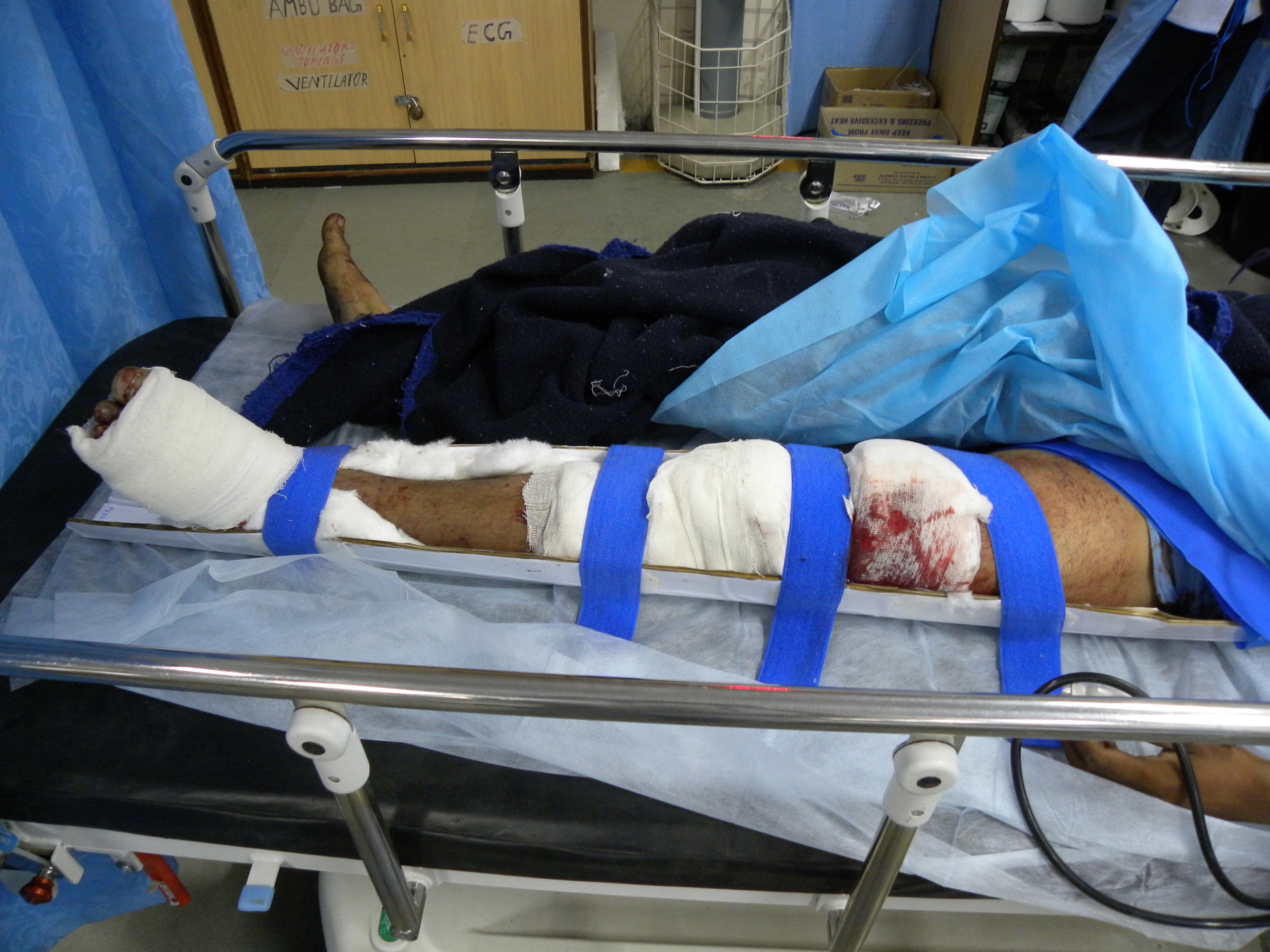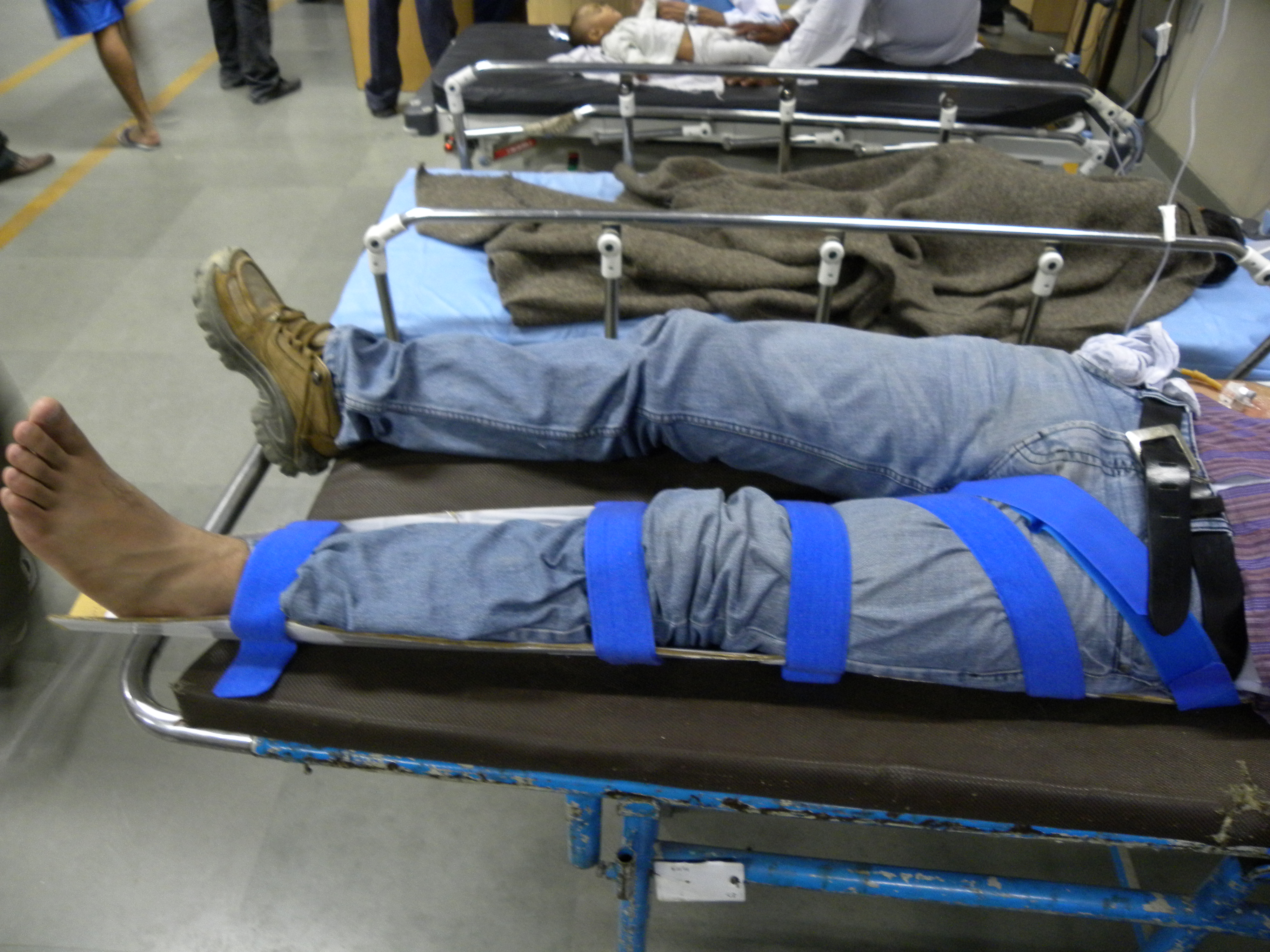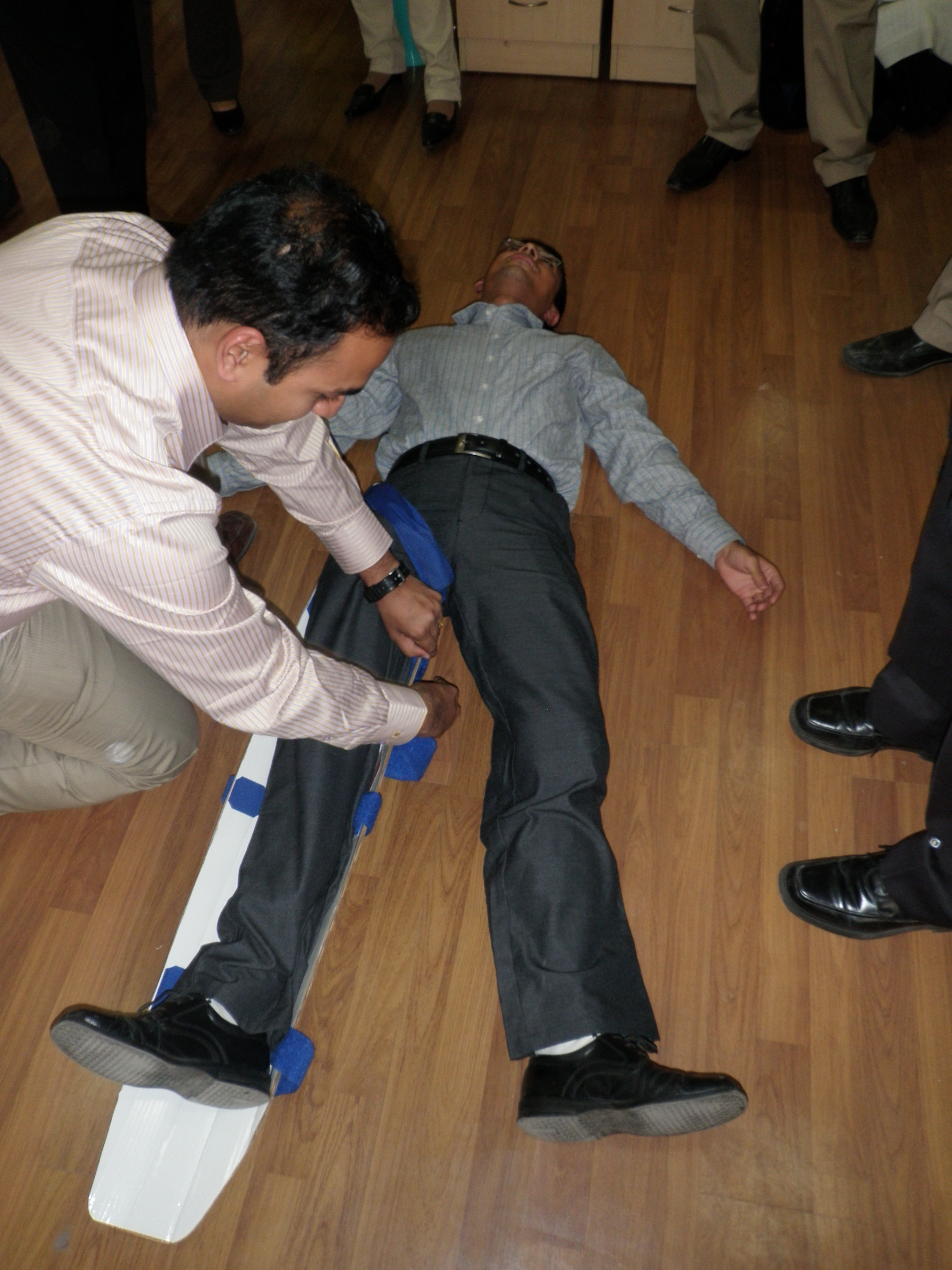Technologies
HiCare Limo Low-Cost Limb Immobilization:
An Interview with Darshan Nayak and Pulin Raje of HiCARE LIMO
What is the need you set out to address?
Darshan: When we were Stanford-India Biodesign fellows, we first conducted clinical immersion at the Stanford Hospital. Our focus area for the fellowship was emergency medicine, and we spent several weeks observing clinical practice in the Stanford emergency room and with its ambulance service looking for unaddressed problems and opportunities. During this time, we couldn’t help but notice that the settings in which we performed our observations were relatively well-resourced, with highly trained staff members, state-of-the-art equipment, and an abundance of supplies. Everybody seemed to have what they needed.
Pulin: When we returned to India, we had another chance to conduct observations in a variety of emergency medicine environments, including emergency departments, trauma centers, local ambulance services, rural district hospitals, and primary care centers. We were struck by the differences we observed. In contrast to our US experience, these facilities in India were overcrowded and severely under-staffed. Another factor complicating the landscape is that health insurance is practically non-existent, with most Indian patients paying out of pocket for medical procedures and devices. In this environment, both the patients and the providers are extremely cost conscious. Everyone is thinking, ‘Is this really needed or not?’ We had to set aside what we saw at Stanford and start with a blank slate.
One problem that captured our attention was when we saw a patient come into the district-level hospital after a road accident. He was taken off the rickshaw and carried in by three people, who were not hospital staff. He had a broken limb, which had not been supported or immobilized since the accident. The first responder in the hospital was a ward boy, followed by a junior resident who checked the patient’s airway and circulation. Since the hospital did not have an orthopedic specialist, the patient was informed that he could not be treated at this facility and that he would have to get himself to a different center. This time, to help immobilize the injured leg during transport, hospital staff strapped a wooden plank to his leg using gauze and bandages. A relatively small percentage of patients had the benefit of a proper splint. And, even when they did, the splint devices were often not used correctly. After more investigation, we realized that many care providers in emergency medicine did not understand basic concepts of limb immobilization and found available splints difficult to fit to injured patients.
"…many care providers in emergency medicine did not understand basic concepts of limb immobilization and found available splints difficult to fit to injured patients."
Darshan: We knew this was an area where we could add value for patients and providers alike. So, the need we set out to address was improving limb immobilization in trauma patients to prevent the aggravation of their wounds during transfer.
What key insight was most important to guiding the design of your solution?
Darshan: As part of our needs finding effort, we spoke with ambulance attendants to get their point of view on the issue of limb immobilization. Ambulance services are accountable for the equipment they own. Even though they have access to existing splint technologies, the attendants often won’t deploy them because of the high cost associated with the splint. We also observed scenarios in which an ambulance attendant would fit the patient with a splint during transport but then retrieve the device before leaving the patient at the hospital. Unfortunately, the removal of the splint often aggravated the patient’s injury. After further investigation, we discovered that many hospitals and primary care centers were similarly reluctant to part with the splints they had in inventory.
Pulin: The key insight was that the splint had to be affordable enough to give away, while also being effective and easy-to-use. To gain a better understanding of what would be required to change existing patterns of behavior, we spoke with ambulance attendants, as well as procurement teams at ambulance companies. We learned that available leg splints cost about Rs. 1200 (approximately US$20) and that an ambulance attendant would try to use one device three to five times before discarding it or leaving it with a patient. This suggested that if we could devise a better solution that costs roughly Rs. 300 (US$5), we would potentially be able to stimulate adoption.

 The HiCARE LIMO technology is a splint alternative intended to be inexpensive enough to stay with the patient during transfers within and between care facilities (see endorsement disclaimer below).
The HiCARE LIMO technology is a splint alternative intended to be inexpensive enough to stay with the patient during transfers within and between care facilities (see endorsement disclaimer below).
How does your solution work?
Darshan: We developed a lower-limb splint that is effective, easy to use, and inexpensive enough for providers to leave with patients after transfer. The device is manufactured using a special pressed paper, coated with a protective plastic layer. We wanted to use sustainable materials in making a medical consumable, so we chose cardboard as the key ingredient because it could be recycled, and it would decompose easily as compared to a plastic board.
The device is longitudinally reinforced to provide excellent structural support for immobilizing the limb. It conforms to multiple limb sizes, as well as both the left and right limbs, and it is fitted to the leg using a series of simple Velcro straps.
Pulin: The composition of the splint is entirely radiolucent, so the device does not have to be removed during X-ray imaging, which prevents further exacerbation of the wound. It’s easily stacked for space-efficient storage in an ambulance or ER setting, and it is disposable after use.
At what stage of development is the solution?
Darshan: In 2013, we licensed the technology to a major Indian manufacturing company called HLL Lifecare Limited.
Pulin: After licensing, we continued to provide support for the initial manufacturing and getting user feedback from the market to continue to optimize the product’s design. There was a lot of interest from stakeholders in the hospitals and trauma centers, so things went well for the first year or two. Then HLL had some management changes and, unfortunately, the product received less and less attention over time.
While this was disappointing, we never intended this to be a big commercial success for us. When we were screening needs as fellows, we knew we wanted to quickly experience the entire medical device innovation and development cycle, before getting pulled into more complex, time-consuming projects. The splint technology was perfect for this. We learned so much through the experience of developing, licensing, and helping commercialize the product. And we’ve now applied those lessons to many other projects in our professional careers.
"…we knew we wanted to quickly experience the entire medical device innovation and development cycle, before getting pulled into more complex, time-consuming projects. The splint technology was perfect for this."
Tell us about a major obstacle you encountered and how you overcame it.
Pulin: When we started prototyping, it was difficult to identify a manufacturer that could build a product like this. We literally went on our bikes from place to place, hunting for the right vendors and trying to convince one of them to make this for us. We finally found someone who used to make boxes for shipping beer bottles and automobile parts because he had domain expertise in cardboard. Luckily, he was excited about innovation and building something new, so he agreed to do it. But he wanted to make 10,000 units when we were ready to start with 100. The issue was that he needed a certain volume to justify stopping the production of the beer bottle boxes for a couple of days to retool the manufacturing line for our product. So, finding a manufacturing partner who can work at the scale you want in the early stages of a product can be challenging. It took a lot of effort and was time consuming.
What role did your Biodesign training play in enabling you to design, develop, and/or implement this solution?
Pulin: I think the program really taught us how to pick the right need. Of course, the rest of the steps in the process are equally important. But if you miss the mark in this first step, then you're really in trouble.
What advice do you have for other innovators about health technology innovation?
Pulin: You don’t want to only think about problems from the clinical perspective. By looking beyond care delivery processes to the purchasing and cost factors that drive them, we were able to identify a meaningful need.
Darshan: Also, remember that sometimes significant value can be generated by addressing a simple problem that requires a simple solution.
Pulin: Finally, do everything you build relationships with key experts who will give you feedback throughout the development process. We were lucky to have orthopedic surgeons and trauma surgeons who we could seek feedback from every week or 10 days. We would routinely ask them about our evolving prototypes or bring them into the design studio to do testing with us. If you only get expert feedback in between development cycles that take 2-4 months, your progress is going to be very slow and inefficient.
Darshan Nayak and Pulin Raje co-founded HiCARE LIMO in 2011 out of the Stanford-India Biodesign program.
Disclaimer of Endorsement: All references to specific products, companies, or services, including links to external sites, are for educational purposes only and do not constitute or imply an endorsement by the Byers Center for Biodesign or Stanford University.





